Melvin Wevers
Blind Dates: Examining the Expression of Temporality in Historical Photographs
Oct 10, 2023
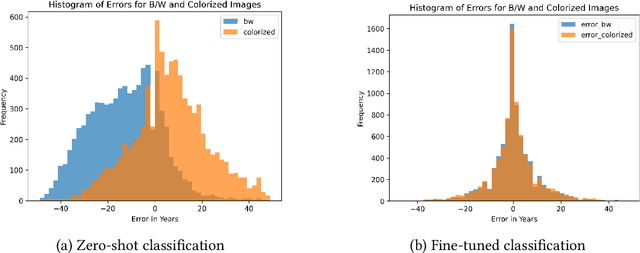

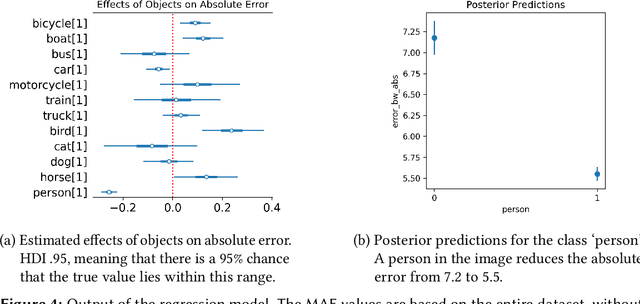
Abstract:This paper explores the capacity of computer vision models to discern temporal information in visual content, focusing specifically on historical photographs. We investigate the dating of images using OpenCLIP, an open-source implementation of CLIP, a multi-modal language and vision model. Our experiment consists of three steps: zero-shot classification, fine-tuning, and analysis of visual content. We use the \textit{De Boer Scene Detection} dataset, containing 39,866 gray-scale historical press photographs from 1950 to 1999. The results show that zero-shot classification is relatively ineffective for image dating, with a bias towards predicting dates in the past. Fine-tuning OpenCLIP with a logistic classifier improves performance and eliminates the bias. Additionally, our analysis reveals that images featuring buses, cars, cats, dogs, and people are more accurately dated, suggesting the presence of temporal markers. The study highlights the potential of machine learning models like OpenCLIP in dating images and emphasizes the importance of fine-tuning for accurate temporal analysis. Future research should explore the application of these findings to color photographs and diverse datasets.
An Analytics of Culture: Modeling Subjectivity, Scalability, Contextuality, and Temporality
Nov 14, 2022Abstract:There is a bidirectional relationship between culture and AI; AI models are increasingly used to analyse culture, thereby shaping our understanding of culture. On the other hand, the models are trained on collections of cultural artifacts thereby implicitly, and not always correctly, encoding expressions of culture. This creates a tension that both limits the use of AI for analysing culture and leads to problems in AI with respect to cultural complex issues such as bias. One approach to overcome this tension is to more extensively take into account the intricacies and complexities of culture. We structure our discussion using four concepts that guide humanistic inquiry into culture: subjectivity, scalability, contextuality, and temporality. We focus on these concepts because they have not yet been sufficiently represented in AI research. We believe that possible implementations of these aspects into AI research leads to AI that better captures the complexities of culture. In what follows, we briefly describe these four concepts and their absence in AI research. For each concept, we define possible research challenges.
Event Flow -- How Events Shaped the Flow of the News, 1950-1995
Sep 17, 2021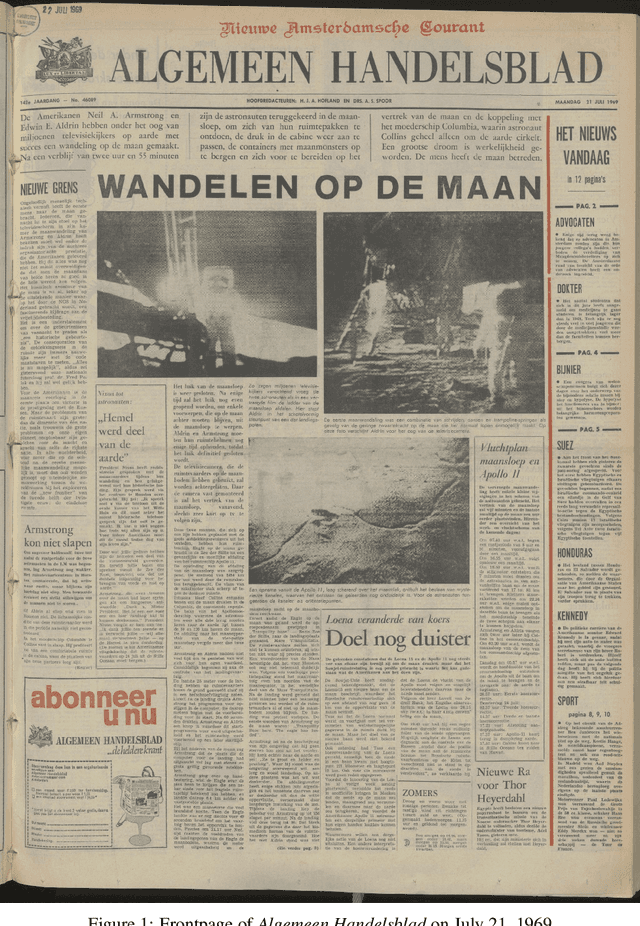
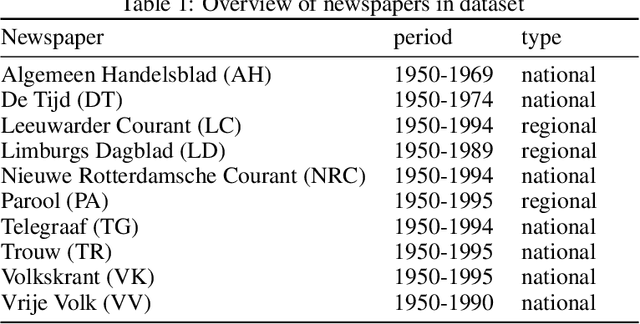


Abstract:This article relies on information-theoretic measures to examine how events impacted the news for the period 1950-1995. Moreover, we present a method for event characterization in (unstructured) textual sources, offering a taxonomy of events based on the different ways they impacted the flow of news information. The results give us a better understanding of the relationship between events and their impact on news sources with varying ideological backgrounds.
Using Word Embeddings to Examine Gender Bias in Dutch Newspapers, 1950-1990
Jul 21, 2019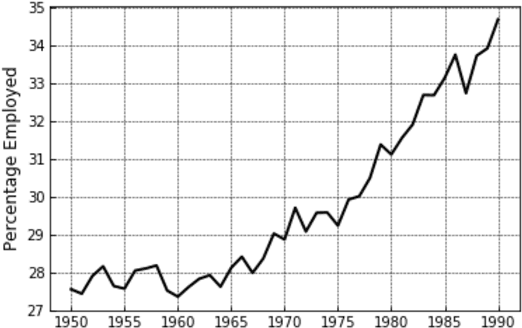

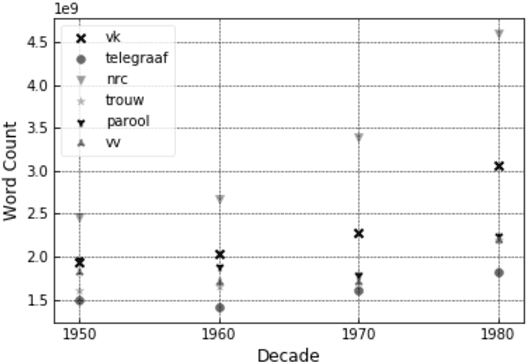

Abstract:Contemporary debates on filter bubbles and polarization in public and social media raise the question to what extent news media of the past exhibited biases. This paper specifically examines bias related to gender in six Dutch national newspapers between 1950 and 1990. We measure bias related to gender by comparing local changes in word embedding models trained on newspapers with divergent ideological backgrounds. We demonstrate clear differences in gender bias and changes within and between newspapers over time. In relation to themes such as sexuality and leisure, we see the bias moving toward women, whereas, generally, the bias shifts in the direction of men, despite growing female employment number and feminist movements. Even though Dutch society became less stratified ideologically (depillarization), we found an increasing divergence in gender bias between religious and social-democratic on the one hand and liberal newspapers on the other. Methodologically, this paper illustrates how word embeddings can be used to examine historical language change. Future work will investigate how fine-tuning deep contextualized embedding models, such as ELMO, might be used for similar tasks with greater contextual information.
 Add to Chrome
Add to Chrome Add to Firefox
Add to Firefox Add to Edge
Add to Edge